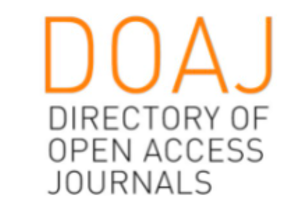EDUCATION AND ECONOMIC GROWTH OF THE WESTERN BALKANS COUNTRIES
DOI:
https://doi.org/10.2478/eoik-2018-0021Keywords:
Education, educational structure, economic growth, development, the Western BalkansAbstract
Numerous theoretical and empiric studies investigate the correlation between education and human capital and economic development. Full affirmation of knowledge and the role of education in stimulating economic growth were provided by endogenous theory. The subject of this paper is to analyse the correlation between education and educational system and the economic growth of the Western Balkans countries (WB). The hypothesis of this work says that: education and educational system in the WB affect the growth of GDP per capita. A better education system stimulates and accelerates the economic growth and development. The aim of this research is to prove that an optimal education system stimulates the growth and development in each observed national economy. In this paper, the results of the correlation analysis indicate high compliance of higher education with GDP per capita i.e. higher education population is particularly important for the level of development whereas there is a highly compliant but inverse relation of the population with informal level of education and economic development in the WB countries.
References
Acosta Ormaechea, S., Morozumi, A. (2013). Can a Government Enhance Long-Run Growth by Changing the Composition of Public Expenditure? IMF Working Papers 13/162, International Monetary Fund.
Abhijeet, C., Islamia, J.M. (2010). Does Government Expenditure on Education Promote Economic Growth? Econometric Analysis. MPRA Paper N. 25480 Munich Personal RePEc Archive. Available at [retrieved on 1 Sept 2018]: https://mpra.ub.uni-muenchen.de/25480/1/Does_Govt_Education_Expenditure_Promote_Economic_Growth_An_Econometric_Analysis.pdf.
Aghion, P. i Howitt P. (1998). Endogenous Growth Theory. Massachusetss: Massachusetss Institute of Tehnology.
Aghion, P., Howitt P. (1992). A Model of Growth through Creative Destruction, Econometrica, 60, 2, 323-351.
Barro, R. (1990). Government Spending in a Simple Model of Endogenous Growth. The Journal of Political Economy, Vol. 98(5)
Barro, R., Sala-i-Martin (2004) Economic growth, Cambridge, MIT Press
Bartlett, W. (2008). Europe’s troubled region: Economic development, institutional reform and social welfare in the Western Balkans. London: Rutledge.
Deniz, H., Hepsag, A., and Yildirim, N., (2011). Do Public education Expenditures Really Lead To Economic Growth? International Research Journal of Finance and Economics . Issue 65; pp. 12-24. EuroJournals Publishing, Inc. ISSN 1450-2887
Heller-Sahlgren, G. (2014). Incentive to invest? How Education affects economic Growth? Adam Smith Institute. Retreived from: https://static1.squarespace.com/static/56eddde 762cd9413e151ac92/t/56f71fad01dbaec09a8a856b/1459036079073/IncentivetoInvest.pdf
Grossman G.M., Helpman E. (1991) Innovation and Growth in the Global Economy, MIT Press, Cambridge.
Lucas R. E. (1988) On the mechanics of economic development, Journal of Monetary Economics, 22, 3-42
Romer, P. (1994) The Origins of Endogenous Growth, Journal of Economic Perspectives, 8, 1, 3-22.
Romer, P. (2018). [Retreived 30.10.2018.]: https://en.wikipedia.org/wiki/Paul_Romer
Solow, R.M. (1956) A contribution to the theory of economic growth, Quarterly Journal of Economics“, 70, 65-94
Swan, T.M. (1956) Economic Growth and Capital Accumulation, Economic record, 32, 334-361
Trpeski, P., Cvetanoska, M. (2016). Labour productivity and economic growth in selected SEE countries after the great recession of 2008. Proceedings of the 4th International Scientific Conference on Contemporary Issues in Economics, Business and Management (EBM 2016), Faculty of Economics in Kragujevac, Republic of Serbia.
National institutes of statistics in the Western Balkans countries, 2005-2014. Retreived from: http://www.bhas.ba/?lang=en (The Agency for statistics of Bosnia and Herzegovina); http://www.stat.gov.rs/ (Statistical Office of the Republic of Serbia); http://www.instat.gov.al/en/home.aspx (The Institute of Statistics -INSTAT); http://www.stat.gov.mk/Default_en.aspx (Republic of Macedonia State Statistical office) http://www.monstat.org/eng/page.php?id=112&pageid=112 (Statistical office of Montenegro - MONSTAT); https://www.dzs.hr/default_e.htm (The Croatian Bureau of Statistics)
Downloads
Published
How to Cite
Issue
Section
License
Copyright (c) 2018 Oikos Institute - Research Centre

This work is licensed under a Creative Commons Attribution-NonCommercial-NoDerivatives 4.0 International License.




















